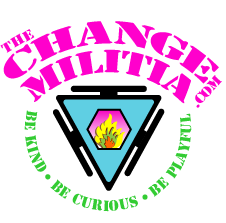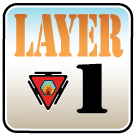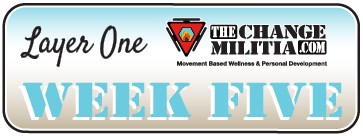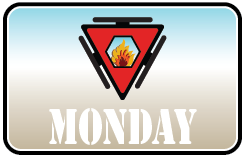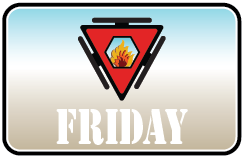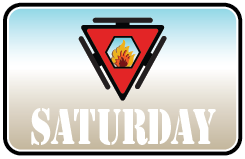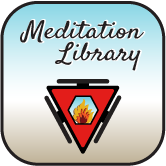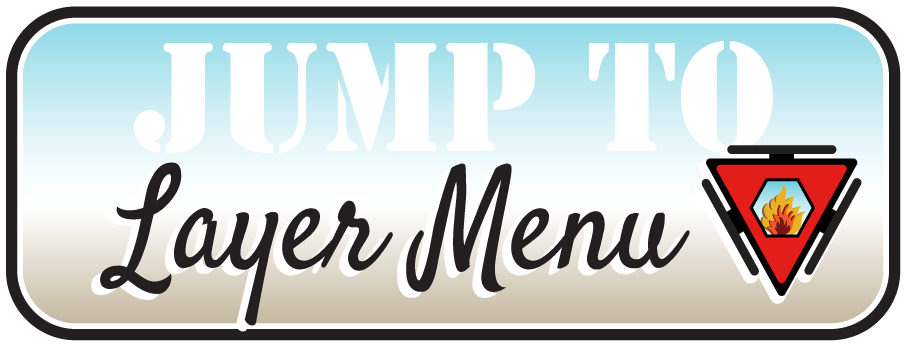This week, you will start having two movements. If that feels like too much, do one movement and then the next movement next week. Remember, this is a movement-based program and the movements will have the biggest benefit. If time is short, do the movements first, the focus second, and read the concepts as your time allows.

Layer One, Week Five – Sunday
- Read Week Two Concepts
- Watch Video, Read Instructions, and Practice –
Sunday’s Focus:
Become aware of how often you feel some sort of discomfort; physical, mental, or emotional. When you feel discomfort, ask yourself if it is healthy or unhealthy. Healthy discomfort will always have long-term benefits.
Sunday’s Concepts
Three of the main concepts we consider in Layer One are self-determination, resistance, and healthy discomfort. You might have felt all three in the movements.
The quality and timbre of our lives is largely determined by the choices we make, the value we assign, and the challenges we allow ourselves to embark upon. Watch the linked video all the way through as you relax and listen. You will be using the music as an analogy for perception, judgment, and choice.
Layer One, Week Five – Monday
- Read Monday Concepts
- Practice –
Monday’s Focus:
When you find yourself doing something habitual, become aware of how familiar it feels in your body. Even if it is unhealthy, it will feel “safe” and your resistance to it will be minimal.
Monday
Watch the video (timbre) again, picturing your emotions as the different instruments. Imagine the notes as sensations. Each instrument might be playing the same note, but you hear it differently. As you interpret the sound, you assign it value. The notes are the same but how you feel about them changes as do the labels you assign.
Listen to the part where he plays the trumpet and the violin.
Which do you prefer? Which do you think is better? What values do you assign to each? How do you feel differently when each play? Which draws you closer and which makes you want to move away, shrink back, or stop the video?
How are you affected by the combination of instruments? Are your opinions based upon feelings? Is your history with any of the components influencing your feelings?
Layer One, Week Five – Tuesday
- Read Tuesday Concepts
- Practice –
Tuesday’s Focus
Begin to connect the labels you assign to the sensations present in your body. What are you feeling, what sensations are present, when you assign a label? Assigning a label can be anything from an exclamation (@#%$) to a judgment, to a quality of existence (I feel happy, sad, disgusted, etc.)
Tuesday’s Concepts
Think about your emotions. If emotions are feelings … you are feeling something. If you are feeling something, there are sensations present. So, if you have emotions, you have sensations. Sensations are not inherently good or bad and don’t have any specific value.
Here is where it gets interesting. You always have sensations and your subconscious mind constantly tries to take your current set of sensations and label them as a some previously felt emotion or emotions. Your subconscious mind keeps flashing labels to your conscious mind until it grabs onto one.
Emotional labels (happy, sad, angry, anxious, etc.) don’t exist until you put a name to a given set of sensations. The labeling of a set of sensations as an emotion is a choice. How often do you choose, usually subconsciously, to be (insert your least favorite emotion here)?
Layer One, Week Five – Wednesday
- Read Wednesday Concepts
- Practice –
Wednesday’s Focus
Identify the area in your body that is most influenced after you assign a label. What changes and where does that change make you feel more comfortable or familiar?
Wednesday’s Concepts
Listen to this video and skip forward to the 56:45 and start listening. See if you can focus on just one instrument (like the bass notes in the background). Let the bass be your preference. Prioritize the bass over the others. See if you can hear the bass preferentially. Focus on the bass until everything else shifts into the background.
How difficult is it? Are you drawn to or away from the bass? Do the other instruments distract you from your intention of prioritizing the bass? Can you give the bass more value and the others less?
Once you get the hang of it, connect that you do the same things with the emotions you typically feel. All your emotions are always playing, you choose which one to focus on (or your subconscious mind chooses for you).
Use the timbre analogy for your thoughts. You have tens of thousands of thoughts a day and choose to concentrate on only a small handful. From this handful, you determine what you focus on, judge, value, long for, resist, judge, and demand.
Layer One, Week Five – Thursday
- Read Thursday Concepts
- Practice –
Thursday’s Focus
Repeat yesterday’s focus. Identify the area of your body that is most influenced when you assign a label. It is challenging but vital to reducing resistance. Where do you tense, relax, fidget, or go numb? Where do you get defensive, offended, or frightened? What do those feelings feel like?
Thursday’s Concepts
Your feelings, thoughts, and personalities are all decisions you make but most of them happen in the background, outside the scope or range of your conscious mind … until you start focusing on them.
After you bring something into your conscious awareness, you can make a decision on what to do with that awareness. Awareness is power, the power to determine, direct, and distinguish where you are and where you want to go next. You can use awareness as a constant feedback loop to increase efficiency, productivity, and fulfillment.
Awareness highlights opportunities. The more you are aware of your environment, internal and external, the more likely you are to see and feel new possibilities. If you can begin to become aware of the components that bring about your anger, you can decide to focus, judge, and value them differently. You can use awareness to create opportunities for change.
Layer One, Week Five – Friday
- Read Friday Concepts
- Practice –
Friday’s Focus
Begin to be aware of how people, places, and situations influence your body. Feel yourself tense or relax, become defensive or feel safe, and increase or decrease your awareness. Where, when, and with whom do you typically perk up, space out, compress, and expand? Who, what, and where do you typically resist?
Friday’s Concepts
Your movements will become decisions that you make consciously when you are more aware of your sensations, labels, and beliefs. You will be able to decide to have more of your actions generate playfulness, joy, success, growth, and fulfillment.
Awareness allows self-determination and self-responsibility. You can determine your path and always maintain the ability to respond. Awareness gives you choice. Awareness maximizes your power, capacity, and capability. Awareness is the new black.
As you become more aware, you will move away from blame, expectation, entitlement, regret, jealousy, resentment, and fear. You will be less reactive. You will gain the skillset to respond in a healthy, beneficial way to everything in and around you.
As you start deciding what labels to assign to your sensations, you can choose the labels that serve you best; labels like happy, fulfilled, confident, motivated, energized, and intimate. You are not a slave of your emotions, thoughts, or feelings. You decide. Decide wisely!
Layer One, Week Five – Saturday
- Read Saturday Concepts
- Practice –
Saturday’s Focus
Repeat Friday’s focus. It becomes very empowering when you can identify a habitual and unconscious change in your system and then consciously decide to configure yourself differently.
Saturday’s Concepts
The next few days, use your awareness to begin to feel for the ways you burn off extra energy. I usually call this diffusion. You might think of it as distraction. You get overly energized and do something to return to a more familiar level of energy. See if you can begin to identify your most common ways. As a clue, everything you do that doesn’t have a positive long-term return on your investment of energy is almost certainly diffusion and distraction.
You might think of it as the ways you regain the middle ground. What do you do when things get too?
What are your typical responses when you are too hot, too cold, too hungry, too quiet, too loud, too tired, too stressed, too worried, too impatient, too intimate, too lonely, or too horny?
What do you do when you are too mad, sad, or glad? How do you react when you feel abandoned, ignored, praised, appreciated, grateful, jealous, or loved?
What do you do when you are bored? How do you distract yourself? How do you bleed energy?
Your diffusions act as fun police. They keep you in a middle range away from the spectacular and the unknown. Thwart them, take your Winnebago into space.
Feel the Soul of Discomfort
Step 1 – Stand and feel what it feels like to stand. What sensations do you feel and where do you feel them? How do you feel gravity? What hurts or feels tight? Where do you feel tension? Can you identify any areas that are hotter, cooler, numb, tingling, sensitive or agitated? Give it a minute or so. Just stand and feel. What feels good, nurturing or rejuvenating?
Step 2 – As you stand, take a mental and emotional inventory. What are the qualities of your emotions? How does it affect your ego when you stand? What mental stories do you generate? What emotions percolate up into your consciousness? Continue this awareness meditation for a minute or two.
Step 3 – Stand and lean forward by shifting your hips forward (not by bending at the waist). You should feel the weight shift to the front of your feet. Find the place where your position is critical, the tipping point where if you lean a little more you will fall forward. Hover here and play with the edge, see how close you can get and then allow yourself to go a little too far. Make sure you are breathing normally or a little deeper than normal. The tendency will be to hold your breath.
Step 4 – See if you can connect with your two minds, the one that wants to challenge your edge and the other one that wants to stay put. Which one feels more dominant? Which is louder? Which is more fearful? Which feels more familiar?
Step 5 – Spend some more time teetering at the edge and see what you can relax physically. How little effort can you employ, how little contraction and tension is necessary to maintain the edge? Are you remembering to breathe?
Step 6 – As you are able to physically relax, see if you can allow yourself to mentally and emotionally relax at that edge. Give this some time, feel for the quality of allowing.
Why it Matters - This full-body movement highlights an obvious edge, either you balance or you fall forward. It will give you a felt sense of the isometric tug-o-war that goes on in your subconscious mind. Do it for long enough and your mind will create tons of stories on why you should stop, your emotions will heighten to the point of overwhelm, and your physical body will signal its growing displeasure.
Everyday Usability - The same exact thing is happening on a much smaller scale in every action, reaction, decision, and non-decision you make. It is happening in every conversation, interaction, and relationship. As you increase your subtle awareness, you will recognize the internal struggle, be able to quiet the storm, and then take the most beneficial action.
Progression - The next level is a walking meditation that helps you find, feel, and embrace your center. It will challenge you to walk in a new and challenging way.
Sit and Unwind, Layer One, Level Two
Step 1 – Sit comfortably (Chair, floor, or sofa, but be comfortable. If you are in a chair, don’t rest your elbows on anything, let them hang. Posture is important but secondary to being relaxed.)
Step 2 – Take a Current30 (Spend 30 seconds being aware of your current situation, environment, disposition)
Step 3 – Begin Exhaust/Purge Breathing (Inhale deeply and exhale with mild force. As you inhale encourage yourself to relax. As you exhale, feel yourself venting tension) Continue for 30 seconds focusing on relaxing your face, neck and shoulders with each compelled exhale.
Step 4 – Sequential Relaxation Level 2 – (Normal but deep breathing) Consciously relax your body as you breathe. Feel your whole body. Feel your emotional body. See if you can feel the weight of your emotions. Continue to breathe, continue to relax your physical body and connect to your emotions as a presence. Give this some time. Persist until you can feel the weight or presence of your emotional body. If you are having trouble, relax any demands you might be putting on yourself and be curious. Approach this exercise with a sense of wonder. When you sense your emotional body, go on to step 5. If you don’t, stop here.
Step 5 – Feel your feet, feel them physically and see if you can feel the emotional weight of your feet. Give it a few breaths. Be quietly and compassionately curious.
Step 6 – Feel empathy, affection and gratitude for your feet. Mentally thank them for their service.
Step 7 – Stop here or, if your schedule allows, continue by highlighting other body parts in the same way.
Step 8 – Take a Current30.
